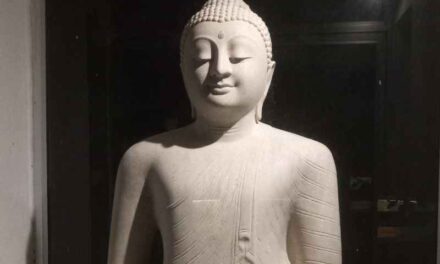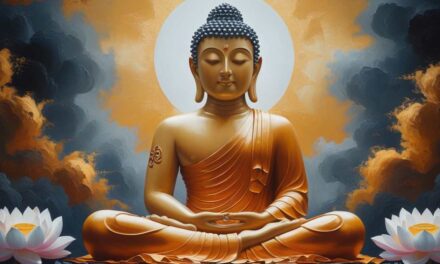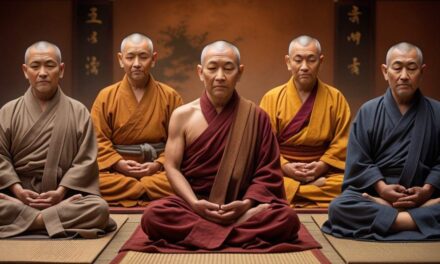Buddhist festivals hold deep religious significance, serving as occasions for reflection, devotion, and community gatherings. In Sri Lanka, where Theravada Buddhism plays a central role in the cultural and spiritual lives of many, Poya days—full moon days—are observed with great reverence. Each Poya day marks a significant event in the life of the Buddha or in Buddhist tradition. Among these, Vap Poya is a major festival that falls in the month of October and is closely linked to the Katina Pinkama, an important religious ceremony celebrated at the end of the monastic retreat known as Vassana.
Vap Poya: A Time for Reflection and Giving
Vap Poya is one of the most revered Poya days in the Buddhist calendar. It marks the conclusion of the three-month Vassana retreat, which is a period of intense meditation and reflection observed by Buddhist monks. During Vassana, monks stay within their monasteries, engaging in deeper spiritual practices. This tradition stems from the time of the Buddha, when monks would remain in one place during the rainy season to avoid unintentionally harming crops or small creatures.
Vap Poya signals the end of this retreat, and it is a time when lay Buddhists actively participate in religious activities, expressing their gratitude and respect for the Sangha (monastic community). On this day, devotees visit temples, offer alms, and take part in various rituals such as the observance of the Five Precepts (guidelines for ethical living) and the practice of meditation. Vap Poya is also significant because it commemorates two historical events: the arrival of Buddhist teachings in Myanmar (Burma) and the settling of the dispute among the monks at the Veluvana Monastery in the Buddha’s time.
Katina Pinkama: A Celebration of Unity and Generosity
One of the most important ceremonies that follows Vap Poya is the Katina Pinkama, celebrated in the month of November. This ceremony involves the offering of a new robe (Katina Cheevara) to the monks who have completed the Vassana retreat. The Katina Pinkama is not just about offering material goods; it symbolizes unity, generosity, and the renewal of spiritual practice.
The significance of Katina lies in the communal aspect of the offering. Traditionally, the entire community comes together to prepare and offer the robe, which must be sewn, dyed, and presented within a single day. This shared effort strengthens the bonds between laypeople and the monastic community. It is believed that offering a Katina robe brings immense merit (good karma) to the devotees, as the monks can only receive this special robe once a year, and the opportunity to participate in such a ritual is considered a rare and precious one.
The Katina Pinkama ceremony also highlights the core Buddhist values of Dana (giving) and Sila (ethical conduct). By giving alms and practicing virtue, Buddhists aim to purify their minds, diminish attachment, and cultivate compassion for others.
Vap Poya: The Full Moon of the Sixth Month
Buddhist festivals are central to the spiritual life of millions of people, particularly in Theravada Buddhist countries like Sri Lanka. Among these festivals, Vap Poya, celebrated in the sixth lunar month, holds particular significance. It marks the conclusion of the three-month monastic retreat, a period of deep reflection and meditation for monks. This full moon day is a time for devotees to reflect on the teachings of the Buddha, especially the core principles of the Four Noble Truths and the Eightfold Path, while participating in religious activities that foster generosity, ethical living, and spiritual growth.
The History of Vap Poya
Vap Poya is an ancient Buddhist festival that traces its origins to the time of the Buddha. The name “Vap” comes from the Sinhala term for the month of October, also known as the “month of sowing” because of the agricultural significance it holds in Sri Lanka. However, Vap Poya is deeply connected with Buddhist history and spirituality, as it commemorates important events in the life of the Buddha and his followers.
One of the significant historical events tied to Vap Poya is the sending of missionaries to Southeast Asia. According to Buddhist tradition, during Vap Poya, the Buddhist teachings were first introduced to Myanmar (formerly known as Burma). The great disciple of the Buddha, Venerable Sona Thera, was sent to this region to spread the Dharma, marking the beginning of Buddhism in Southeast Asia. This historical moment highlights the importance of Vap Poya not only in Sri Lanka but also in the broader spread of Buddhist teachings across Asia.
Another historical significance of Vap Poya is that it marks the time when King Devanampiyatissa, the ruler of Sri Lanka, prepared for the arrival of the great missionary monk Arahant Mahinda, who would later bring Buddhism to the island. While this event is more closely associated with Poson Poya, it adds context to the importance of Vap Poya, as it reflects the continued commitment of the Buddhist community to uphold and spread the teachings of the Buddha.
The Significance of the Full Moon
In Buddhism, full moon days, known as Poya days in Sri Lanka, are of special significance. The Buddha himself emphasized the importance of the full moon, as many crucial events in his life occurred on such days. Vesak Poya, for example, celebrates the Buddha’s birth, enlightenment, and passing away, all of which took place on full moon days.
The full moon is seen as a symbol of completeness and illumination. Just as the full moon illuminates the night sky, the Buddha’s teachings, or Dhamma, are believed to illuminate the path to spiritual awakening for all sentient beings. Full moon days offer an opportunity for reflection, self-discipline, and devotion, allowing laypeople and monks alike to practice meditation and mindfulness more intensely. These days are observed with religious fervor, where the community gathers at temples to participate in rituals, offer alms, and reflect on the deeper meanings of life.
For Vap Poya, the full moon symbolizes the end of the monastic retreat, known as Vassana, which occurs during the rainy season. After spending three months in seclusion, monks emerge from their retreat to re-engage with the lay community, offering teachings and receiving alms. This period of renewed interaction between monks and laypeople is an essential part of Vap Poya and highlights the interconnectedness of the monastic and lay communities in the practice of Buddhism.
The Four Noble Truths and the Eightfold Path
At the heart of Vap Poya, and indeed all Buddhist festivals, are the teachings of the Buddha. The core of these teachings lies in the Four Noble Truths and the Eightfold Path, which form the foundation of Buddhist practice and philosophy.
- The Four Noble Truths:
- Dukkha (Suffering): The Buddha’s first teaching was that life is characterized by suffering. This includes not only physical pain but also the emotional and psychological suffering that comes from attachment, desire, and ignorance.
- Samudaya (Cause of Suffering): The second truth explains that the cause of suffering is craving or desire (tanha). Humans are constantly grasping for things, whether material or emotional, and this attachment leads to suffering.
- Nirodha (Cessation of Suffering): The third truth offers hope by stating that it is possible to end suffering by eliminating craving and attachment.
- Magga (The Path to the End of Suffering): The fourth truth lays out the Eightfold Path, which is the path to the cessation of suffering and the attainment of enlightenment.
- The Eightfold Path:
- Right Understanding: Understanding the nature of reality and the Four Noble Truths.
- Right Thought: Developing a mind free from ill-will, hatred, and harmful intentions.
- Right Speech: Speaking truthfully, avoiding gossip, lies, and harmful speech.
- Right Action: Acting in ways that are ethical and do not cause harm to others.
- Right Livelihood: Choosing a profession that does not harm others and aligns with Buddhist principles.
- Right Effort: Cultivating positive states of mind and letting go of unwholesome mental states.
- Right Mindfulness: Developing awareness of the present moment and understanding one’s thoughts, feelings, and actions.
- Right Concentration: Cultivating deep states of meditative concentration, leading to insight and wisdom.
The Four Noble Truths and the Eightfold Path are integral to Buddhist practice, and Vap Poya provides an opportunity for devotees to reflect deeply on these teachings. By observing the precepts, meditating, and participating in religious rituals, Buddhists seek to align their lives more closely with these truths, striving for greater ethical conduct, mental clarity, and spiritual growth.
The Role of Vap Poya in Buddhist Practice
Vap Poya plays a crucial role in both monastic and lay Buddhist practice. For monks, it marks the end of the Vassana retreat, a time of intense meditation and reflection. During Vassana, monks are expected to stay in one place, typically within their monasteries, to avoid harming crops and creatures during the rainy season. This retreat period is a time for monks to deepen their understanding of the Dhamma and cultivate their spiritual practice without the distractions of daily life.
At the conclusion of this retreat, Vap Poya provides an opportunity for the monastic community to reconnect with the lay community. The ceremony of Katina Pinkama, which follows Vap Poya, involves the offering of new robes to the monks, symbolizing the renewed commitment to the path of renunciation and the importance of communal support for the Sangha. This ritual also provides laypeople with an opportunity to accumulate merit, which is believed to contribute to their spiritual progress and eventual liberation from the cycle of rebirth.
For lay Buddhists, Vap Poya is a time for renewal and reflection. Many devotees observe Sil on this day, which involves practicing the Eight Precepts (a more rigorous set of ethical guidelines than the usual Five Precepts) and spending the day in mindful meditation and religious observance. Temples across Sri Lanka are filled with devotees participating in Dhamma sermons, meditation sessions, and almsgiving. The day serves as a reminder of the importance of ethical living, generosity, and mindfulness in everyday life.
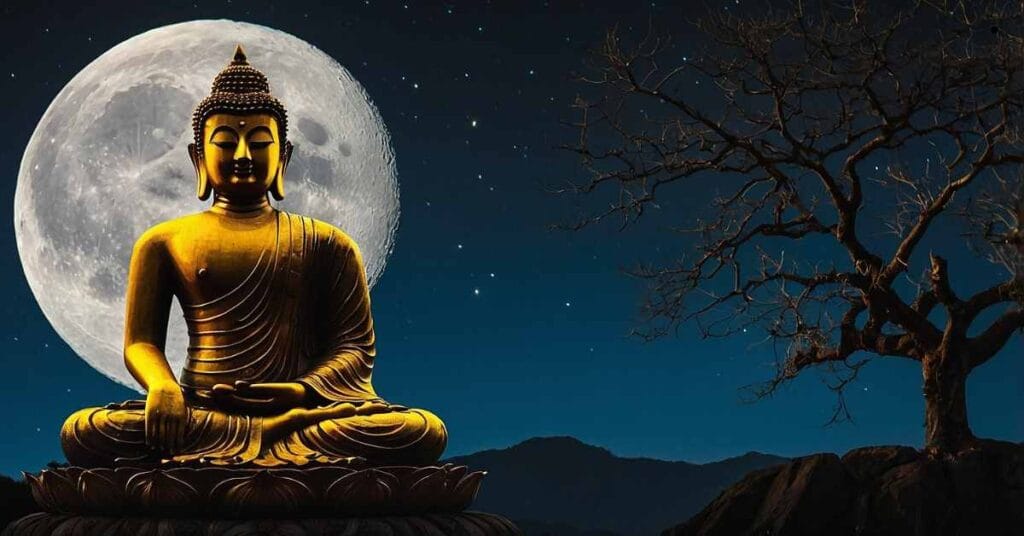
The Katina Pinkama: A Noble Act of Giving
The Katina Pinkama is one of the most revered and significant religious ceremonies in the Theravada Buddhist tradition. It is observed at the conclusion of the three-month Vassana retreat, during which monks stay within their monasteries to engage in deep meditation and spiritual reflection. The Katina Pinkama centers around the act of offering new robes to the monks, symbolizing a profound act of generosity and community support. This ritual not only strengthens the bonds between the monastic and lay communities but also brings immense merit to those who participate. Through this sacred practice, the values of selflessness, compassion, and communal harmony are upheld.
The Origins of the Katina Pinkama
The tradition of the Katina Pinkama traces its origins to the time of the Buddha himself. According to the Pali Canon, the earliest scriptures of Theravada Buddhism, the Katina ceremony began during the Buddha’s lifetime as a way to address a practical problem encountered by monks during the rainy season retreat, known as Vassana.
One rainy season, a group of thirty monks set out on a long journey to meet the Buddha. As they traveled, they were caught in heavy rain and arrived at their destination with their robes soaked and worn. Moved by their dedication and hardship, the Buddha allowed these monks to receive new robes upon the completion of their retreat. He introduced the Katina Cheevara or the “offering of robes” to support monks who had completed their Vassana period, allowing them to focus on their spiritual practice without the worry of worn-out robes.
Since that time, the Katina Pinkama has been celebrated annually at the end of the Vassana retreat, which lasts from July to October. This practice continues to be a key event in the Buddhist calendar, observed by both the monastic and lay communities across Theravada Buddhist countries, especially in Sri Lanka, Myanmar, Thailand, Laos, and Cambodia.
The Process of the Katina Pinkama
The Katina Pinkama ceremony is an elaborate and joyful event, involving the collective efforts of the entire community. The process begins with the preparation of the Katina Cheevara, the special robe that is to be offered to the monks. Traditionally, the robe must be sewn, dyed, and offered on the same day, which requires the participation of many devotees. This shared effort highlights the sense of unity and cooperation within the Buddhist community, as laypeople work together to create the robe.
On the day of the ceremony, the atmosphere at the temple is filled with devotion and reverence. Devotees gather early in the morning, bringing with them not only the Katina robe but also other offerings such as food, flowers, and candles. The ceremony usually begins with Dhamma sermons, where monks deliver teachings on the Dhamma (the Buddha’s teachings) and the significance of the Katina ritual. This is followed by a procession in which the robe is carried to the monastery in a ceremonial manner.
Once the robe is brought to the temple, it is presented to the monks in a formal offering. The monks, in turn, express their gratitude and blessings to the laypeople, acknowledging the merit and generosity of their offering. Following the robe offering, there is often a Dana (almsgiving) ceremony, where devotees offer food and other essentials to the monks.
The Katina Pinkama is unique in that it can only be held once a year at any given monastery, and the offering of the Katina robe can only be done by one layperson or group. This adds to the rarity and special nature of the ceremony, making it a deeply anticipated event in the Buddhist community.
The Significance of Offering Robes
The act of offering robes during the Katina Pinkama carries profound spiritual significance. In Buddhism, Dana (generosity) is one of the key virtues that laypeople are encouraged to cultivate, and offering robes is seen as one of the highest forms of Dana. This is because the monks depend on the lay community for their material needs, including their robes, which symbolize their renunciation of worldly possessions and their commitment to the monastic life.
Robes are essential for monks, as they represent not only their spiritual discipline but also the simplicity and humility of their way of life. By offering a new robe, laypeople are helping to ensure that the monks can continue their spiritual practice without hindrance. This act of giving is not merely a material exchange; it is a deeply symbolic gesture of support for the Sangha (the monastic community) and an acknowledgment of the interdependence between monks and laypeople in the Buddhist path.
The offering of robes during Katina is also symbolic of the renewal of spiritual commitment. Just as the monks have completed their period of retreat and reflection, the laypeople, through their offering, renew their commitment to the Buddha’s teachings and to the practice of generosity and compassion. This mutual exchange strengthens the spiritual community and reinforces the principles of ethical living and mindfulness.
The Benefits of Participating in the Katina Pinkama
The Katina Pinkama is a ceremony that brings numerous spiritual benefits to those who participate. In Buddhist tradition, participating in the offering of the Katina robe is considered to be a highly meritorious act, bringing immense good karma. According to Buddhist teachings, the merit gained from offering a Katina robe is incomparable and can lead to both material and spiritual benefits in this life and future lives.
- Accrual of Merit: Merit, or Punna, is a key concept in Buddhism, referring to the positive karma accumulated through good deeds. The offering of a Katina robe is seen as one of the most meritorious actions a layperson can perform, as it directly supports the monastic community and their spiritual efforts. It is believed that the merit earned through this act can help to purify one’s mind, reduce negative karma, and lead to favorable rebirths in the cycle of samsara.
- Fostering Generosity: The Katina ceremony is a profound expression of Dana, one of the Ten Perfections (Paramitas) that Buddhists strive to develop. Generosity is not only about giving material possessions; it is also about cultivating a mind of compassion, selflessness, and detachment from greed. By participating in the Katina Pinkama, laypeople practice these virtues, which contribute to their spiritual development and path toward enlightenment.
- Strengthening Community Bonds: The Katina Pinkama is a communal event that brings people together in a shared spiritual endeavor. The collective preparation and offering of the robe foster a sense of unity, cooperation, and mutual respect. It serves as a reminder that spiritual growth is not an individual pursuit but one that involves the entire community. The act of giving and receiving strengthens the ties between the monastic and lay communities, ensuring the continued flourishing of the Dhamma.
- Inspiration for Spiritual Practice: The Katina Pinkama serves as an inspiration for deeper spiritual practice. Witnessing the devotion and discipline of the monks, as well as participating in the rituals, motivates laypeople to reflect on their own practice and commitment to the Buddha’s teachings. It is a time for renewing one’s dedication to ethical living, mindfulness, and meditation.
The Katina Pinkama is a noble and deeply significant ceremony that highlights the core values of generosity, compassion, and community within the Buddhist tradition. Originating from the time of the Buddha, this annual event provides laypeople with the opportunity to offer new robes to monks who have completed their rainy season retreat, thereby supporting their spiritual journey. The process of the Katina Pinkama is a beautiful expression of communal effort and devotion, with both monks and laypeople working together to uphold the teachings of the Buddha.
Through the offering of robes, participants accrue immense merit, strengthen their practice of generosity, and reinforce the bonds of the Buddhist community. The Katina Pinkama stands as a testament to the interconnectedness of the monastic and lay communities, ensuring the continued vitality and growth of the Sasana (Buddhist dispensation). In a broader sense, it serves as a reminder of the importance of giving, ethical conduct, and spiritual reflection in the pursuit of enlightenment.

The Connection Between Vap Poya and the Katina Pinkama
Vap Poya and the Katina Pinkama are two highly significant events in Theravada Buddhism that are intricately connected, both historically and spiritually. Vap Poya is observed during the full moon of October, marking the end of the three-month Vassana retreat. The Katina Pinkama, on the other hand, is the ceremonial offering of robes to monks who have completed their Vassana retreat. Together, these two events highlight important aspects of Buddhist monastic life, spiritual discipline, and community involvement. Their conjunction underscores the deep-rooted relationship between the monastic and lay communities and their collective role in upholding the Buddha’s teachings.
The Historical Link
The connection between Vap Poya and the Katina Pinkama can be traced back to the time of the Buddha himself. The Vassana period, or the Rains Retreat, was instituted by the Buddha to prevent monks from traveling during the rainy season, as it could cause harm to crops, small animals, and insects. During this retreat, monks remained in one place, usually a monastery, to focus on meditation, study, and introspection. Vap Poya, the full moon of October, signifies the conclusion of this retreat, marking a period of renewed commitment to the Dhamma.
Historically, the origin of the Katina Pinkama is tied to an incident involving a group of thirty monks who traveled long distances to visit the Buddha during the rainy season. By the time they reached their destination, their robes were tattered and worn due to the harsh weather. Moved by their devotion and endurance, the Buddha allowed the monks to receive new robes after the retreat. He then introduced the tradition of offering Katina Cheevara, or new robes, to monks who had completed the Vassana retreat.
Since then, the Katina Pinkama has been held annually after Vap Poya, symbolizing the end of the Vassana period and celebrating the monks’ spiritual achievements. The historical link between Vap Poya and the Katina Pinkama reflects the importance of monastic discipline, community support, and mutual interdependence in Buddhist practice.
The Spiritual Significance of the Conjunction
The spiritual significance of the connection between Vap Poya and the Katina Pinkama lies in the intertwining themes of renunciation, generosity, and renewal. Vap Poya marks the completion of the monks’ retreat, a time during which they engage in deeper meditation and reflection. It is a period of spiritual growth, self-discipline, and adherence to the Dhamma. As the monks emerge from this period of introspection, the Katina Pinkama provides an opportunity for the lay community to express their gratitude and support through the offering of robes.
In Buddhism, the act of offering robes (Dana) holds immense merit and is considered a high form of Punna (meritorious deeds). By offering new robes to the monks, the laypeople participate in an act of generosity that symbolizes their commitment to supporting the monastic community. The Katina Pinkama also serves as a reminder of the interconnectedness between the monastic and lay communities, with each playing a crucial role in sustaining the Buddha’s teachings.
The renewal aspect of Vap Poya is reflected in the Katina Pinkama, as both the monks and laypeople renew their spiritual commitments. For the monks, it is a time to reflect on the progress made during the Vassana retreat and to continue their practice with renewed vigor. For the laypeople, participating in the Katina Pinkama is an opportunity to cultivate virtues such as generosity, compassion, and humility. This mutual exchange of support and merit fosters a sense of spiritual harmony and unity within the community.
The Role of the Sangha
The Sangha, or the monastic community, plays a central role in both Vap Poya and the Katina Pinkama. During the Vassana retreat, the Sangha dedicates itself to rigorous spiritual practice, setting an example of discipline, mindfulness, and renunciation for the lay community. The end of the retreat, marked by Vap Poya, is a time for the Sangha to re-engage with the lay community, sharing the fruits of their practice and receiving support through the Katina Pinkama.
The offering of robes during the Katina Pinkama is not only a material gift but also a symbolic gesture of the laypeople’s recognition of the Sangha’s importance in preserving the Dhamma. The Sangha is responsible for maintaining the teachings of the Buddha, serving as spiritual guides, and providing a living example of the path to enlightenment. In return, the lay community supports the Sangha’s material needs, ensuring that monks can continue their practice without distraction.
Through the Katina Pinkama, the bond between the Sangha and the lay community is strengthened. The Sangha relies on the laypeople for their sustenance, while the laypeople rely on the Sangha for spiritual guidance and teachings. This reciprocal relationship is essential for the flourishing of the Sasana (the Buddha’s dispensation) and the continuation of the Dhamma.
Additionally, the Katina Pinkama serves as a reminder of the Sangha’s role in promoting ethical conduct and mindfulness. The discipline observed by the monks during the Vassana retreat sets a standard for the lay community, encouraging them to follow the Five Precepts and cultivate a virtuous life. The offering of robes after Vap Poya is an acknowledgment of the Sangha’s dedication to the path of liberation and an inspiration for the laypeople to emulate their commitment to the Dhamma.
The Impact on Buddhist Communities
The conjunction of Vap Poya and the Katina Pinkama has a profound impact on Buddhist communities, fostering a sense of unity, generosity, and spiritual reflection. These events are not only religious observances but also opportunities for the entire community to come together in a spirit of mutual support and shared values.
- Strengthening Community Bonds: The Katina Pinkama is a communal event that involves the active participation of both monks and laypeople. The preparation of the Katina Cheevara (robe), the procession, and the offering ceremony are all collective efforts that bring the community together. This shared experience fosters a sense of belonging, cooperation, and mutual respect among participants. The act of giving and receiving creates a deep bond between the monastic and lay communities, reinforcing the interconnectedness of their spiritual journeys.
- Promoting Generosity and Compassion: The Katina Pinkama serves as a powerful reminder of the importance of Dana (generosity) in Buddhist practice. By offering robes to the monks, the laypeople practice selflessness and compassion, virtues that are central to the Buddha’s teachings. This act of giving not only benefits the monks but also enriches the spiritual lives of the laypeople, helping them to cultivate positive karma and reduce attachment to material possessions.
- Encouraging Spiritual Reflection: Vap Poya and the Katina Pinkama provide a time for spiritual reflection and renewal. For the monks, the end of the Vassana retreat marks a period of deepened insight and progress on the path to enlightenment. For the laypeople, participating in the Katina Pinkama is an opportunity to reflect on their own practice, renew their commitment to the Five Precepts, and aspire to greater mindfulness and ethical conduct.
- Merit Accrual and Future Well-Being: In Buddhist belief, participating in the Katina Pinkama generates immense merit, which can lead to favorable rebirths and spiritual advancement. The merit accrued through acts of generosity, especially those directed toward the Sangha, is considered one of the most powerful ways to purify the mind and accumulate positive karma. For many laypeople, the Katina Pinkama is a time to dedicate their merit to the well-being of loved ones, the community, and all sentient beings.
- Preserving the Buddha’s Teachings: The support provided to the Sangha through the Katina Pinkama ensures the continued preservation and transmission of the Buddha’s teachings. By offering material support, laypeople enable the monks to focus on their spiritual practice, study, and teaching. This sustains the vitality of the Dhamma and ensures that future generations will have access to the teachings of the Buddha.
The connection between Vap Poya and the Katina Pinkama is a profound one, rooted in both historical tradition and spiritual significance. Vap Poya marks the end of the monks’ Vassana retreat, a time of heightened spiritual practice, while the Katina Pinkama provides an opportunity for the lay community to express their support and gratitude through the offering of robes. This conjunction underscores the themes of renunciation, generosity, and renewal, reinforcing the mutual interdependence between the monastic and lay communities.
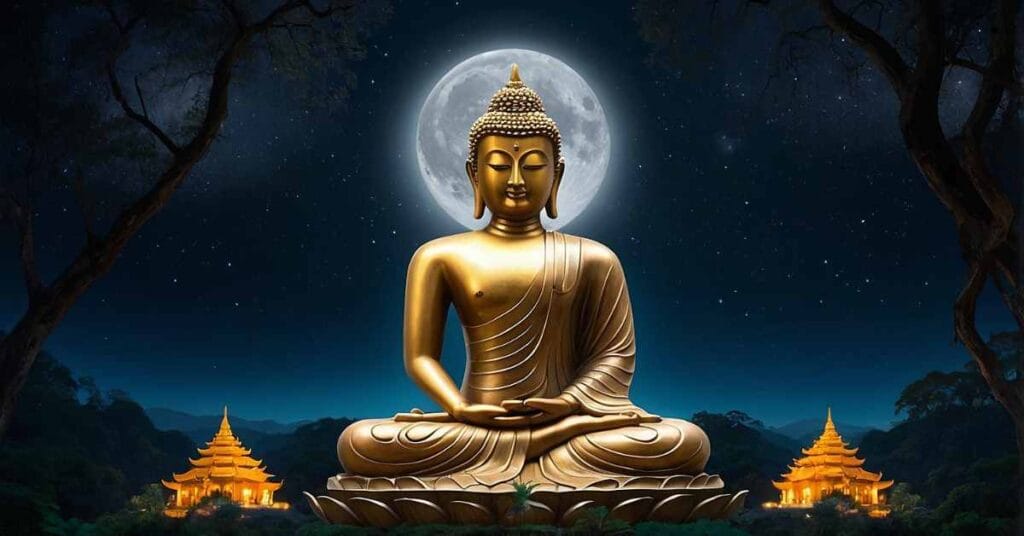
The Modern-Day Significance of Vap Poya and the Katina Pinkama
In today’s fast-paced world, the Vap Poya and the Katina Pinkama remain two of the most revered and celebrated events in Theravada Buddhism. Despite the changes in societal norms and lifestyles, these observances continue to hold great importance for Buddhists across the world, particularly in countries like Sri Lanka, Thailand, Myanmar, and Laos. Vap Poya, observed on the full moon of October, marks the conclusion of the three-month Vassana retreat for monks, while the Katina Pinkama, the act of offering robes to monks, symbolizes generosity and communal harmony. Both these events, though ancient in origin, have profound relevance in contemporary Buddhist practice.
The Relevance in Contemporary Buddhist Practice
In modern times, the core values that Vap Poya and Katina Pinkama represent—**spiritual reflection, community support, and generosity—**are as vital as ever. Amid the challenges of contemporary life, these Buddhist traditions offer moments of pause, reflection, and reconnection with core values. For many laypeople, participating in these observances is a reminder of the Four Noble Truths and the Eightfold Path, which form the foundation of Buddhist practice. These truths, which focus on the cessation of suffering through ethical living, mindfulness, and wisdom, are central to both Vap Poya and the Katina Pinkama.
Vap Poya serves as an annual opportunity for both monks and laypeople to reflect on their progress in the spiritual path. It is a time for renewal, when monks emerge from their meditative retreat and reengage with the lay community. For many laypeople, this period is also a time to revisit their practice, deepen their meditation, and strengthen their commitment to the Five Precepts (abstaining from killing, stealing, lying, sexual misconduct, and intoxicants).
The Katina Pinkama, on the other hand, serves as a tangible expression of the Buddhist principle of Dana (generosity). In an age where materialism and self-interest can dominate, the Katina ceremony allows individuals to perform selfless acts by supporting the monastic community through robe offerings and other donations. This act of giving is not merely a material exchange but a deeply spiritual offering that generates merit (Punna), believed to bring about spiritual blessings and a favorable rebirth.
The Role of Monasteries and Temples
Monasteries and temples play a crucial role in the observance of Vap Poya and the Katina Pinkama. In today’s world, where monasteries are often seen as spiritual sanctuaries and community hubs, they provide a physical and spiritual space for the observance of these traditions. The Vap Poya observance usually begins at the temple, where both monks and laypeople gather for special pujas (rituals), meditation, and Dhamma sermons. The temple acts as a center of learning, where devotees receive guidance from the monks and engage in spiritual discourse.
During the Katina Pinkama, the temple becomes a site of vibrant community activity. The preparation of the Katina Cheevara (robe) is often a collective effort involving many people, from the weaving of the cloth to the ceremonial offering. Monasteries facilitate this by coordinating the logistics of the ceremony, ensuring that the event is inclusive and accessible to all members of the community. In many ways, the Katina Pinkama reinforces the role of the temple as a bridge between the monastic and lay communities, strengthening the bonds of interdependence.
Modern monasteries have adapted to accommodate the evolving needs of the Buddhist community. Many now offer additional programs during Vap Poya, such as workshops on mindfulness, ethical living, and environmental conservation, recognizing the need to address contemporary issues within a spiritual framework. Likewise, the Katina Pinkama has expanded beyond the traditional robe offering to include charitable acts such as donations to schools, hospitals, and underprivileged communities, demonstrating the social outreach of modern Buddhist temples.
The Impact on Communities and Society
Vap Poya and the Katina Pinkama continue to have a positive and unifying impact on communities and society. In many Buddhist-majority countries, these events are major social gatherings that transcend religious practice and become opportunities for communal bonding. The communal aspects of the Katina Pinkama, in particular, bring people together in a spirit of giving, cooperation, and shared purpose.
For the lay community, the Vap Poya day is often a time to take temporary vows of Uposatha (observing the Eight Precepts) and spend the day in the temple, engaging in meditation and listening to Dhamma talks. This practice allows them to step away from the busyness of everyday life and reconnect with spiritual values. This day-long retreat from worldly responsibilities is seen as a way to cleanse the mind and cultivate mindfulness, an important practice that is often neglected in modern life due to hectic schedules and distractions.
The Katina Pinkama further amplifies the sense of community. Beyond the robe offering, it is also a time for acts of social service, such as feeding the hungry, caring for the elderly, and supporting local charitable causes. This transformation of the Katina ceremony into an opportunity for social welfare aligns well with the Buddhist ideals of compassion and altruism. In many parts of the world, Buddhist communities have integrated these practices into broader community service projects, thereby extending the reach of the Katina Pinkama beyond the temple and into the wider society.
Furthermore, these events help to preserve and promote Buddhist cultural identity. As younger generations participate in Vap Poya and the Katina Pinkama, they are introduced to the rich heritage and spiritual values of their ancestors. These festivals serve as a means of passing down the Buddha’s teachings from one generation to the next, ensuring that the Dhamma continues to flourish in an ever-changing world.
The Future of Vap Poya and the Katina Pinkama
Looking ahead, the future of Vap Poya and the Katina Pinkama appears bright, with these observances adapting to meet the needs of modern society. With the growth of Buddhism in both traditional and non-traditional Buddhist countries, these festivals are likely to evolve while maintaining their core spiritual values. The rise of technology and social media has allowed these traditions to reach a global audience, spreading awareness and participation beyond geographical boundaries.
In contemporary urban settings, where temples are sometimes less accessible, Buddhist communities have begun to organize virtual Vap Poya celebrations. These include online Dhamma talks, guided meditations, and live-streamed Katina ceremonies that allow Buddhists from all over the world to participate in these sacred events from the comfort of their homes. This blending of tradition with technology has opened new avenues for practicing the Dhamma in a digitally connected world.
As the global consciousness shifts toward environmental sustainability, modern-day Vap Poya and Katina Pinkama observances may also incorporate eco-friendly practices. Buddhist communities have started to integrate environmental awareness into these festivals by organizing tree-planting events, recycling initiatives, and promoting minimalist consumption, which resonate with the Buddhist values of non-harm (Ahimsa) and simplicity.
The future of these festivals also lies in their ability to address contemporary societal issues. The themes of generosity, community, and spiritual growth inherent in Vap Poya and the Katina Pinkama can serve as powerful tools for addressing social inequality, mental health challenges, and global humanitarian crises. Through charitable activities linked to the Katina ceremony, Buddhist communities can continue to offer support and relief to those in need, further expanding the compassionate reach of these sacred traditions.



